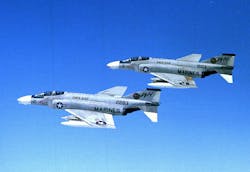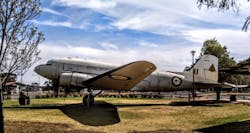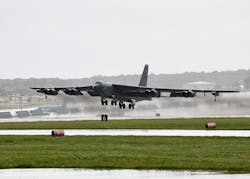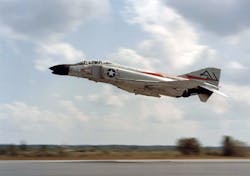Why is it that some airplanes seem to fly well past what anyone could’ve hoped for in terms of an operational life? Is it overdesign or good design or both? Healthy safety margins? Designers with an eye toward engineering rather than planned obsolescence? Or maybe it’s just dumb luck. But as Obi-Wan Kenobi said, “There is no such thing as luck.” And, to throw in another “literary” quote, this one from Branch Rickey, “Luck is the residue of design.”
Either way, here are some planes that seem to have out-flown other planes of their era.
The Douglas DC-3 has to be the king of over-engineered aircraft. The twin piston-engined monoplane was first developed and flew in 1936 as an airliner that could hold 14 sleeper beds. As an airliner, it brought about true coast-to-coast flying. Granted, it could be a 17.5-hr. flight with three fuel stops. But until then, it took two days of short hops plus an overnight train trip. The plane cost about $80,000 when built, which means they would run $1.4 million today.
But the plane really took off in World War II (pun intended). It was renamed the C-47 Skytrain (and called the Dakota in the RAF) and over 16,000 were built. Even the Russians built versions. It was used for troop and cargo transport, dropped paratroopers into battle (more than 50,000 in the first days after D-Day), and towed gliders to altitude, among other missions.
It’s estimated that about 400 DC-3s and converted C-47s are still flying, 70 years after production stopped. It could be the first airliner to fly for over a century. Pilots appreciate its good handling characteristics, rugged landing gear, and ability to land and take off from short fields. They are also said to be easy to maintain, though parts are probably hard to come by.
Boeing’s B-52 Stratofortress long served as the U.S. Air Force’s main strategic bomber after it entered service in 1955, and is still a key element in the U.S. arsenal. It is also the U.S. aircraft capable of carrying the widest assortment of weapons including gravity bombs, cluster bombs, precision-guided missiles, and joint direct-attack munitions. It can carry up to 70,000 lb. of ordnance.
Nearly 750 B-52s were built through 1962, including models A though H, and then production stopped. Only the H version is still flying. But upgrades and good maintenance should keep them flying beyond 2040, according to some engineering analyses.
The bomber is powered by eight Pratt & Whitney engines, each putting out 17,000 lb. of thrust. Top speed is 650 mph and it has a maximum take-off weight of 488,000 lb. It has a range of 10,145 miles, but it can fly indefinitely with aerial refueling.
The Lockheed C-130 Hercules also entered service in 1955, but as a military transport plane capable of using unprepared runways for landings and takeoffs. It started life as a cargo and troop/medivac vehicle, but has been used as a platform for a gunship (AC-130), assault aircraft, firefighter, refueling tanker, search and rescue vehicle over land and sea, weather recon, and scientific support vehicle. Over 2,500 have been built in over 40 variations, and it is still in production. In fact, it holds the record for the longest continuous production run of any military aircraft. The Hercules is flown by the militaries of more than 60 countries.
The McDonnell Douglas F-4 Phantom was developed as a two-seat, twin-engine supersonic fighter/bomber for the Navy and entered service in 1960. It was quickly adopted by the Marines and Air Force. Right out of the box, the Phantom began setting speed and altitude records, racking up 15 before it was five years old. It could fly Mach 2.5 and climb as high as 98,000 ft. It could also carry up to 18,000 lb. of armaments, including a wide assortment of missiles and bombs. Soon after it was initially deployed, the Navy had rotary cannon installed for air-to-air combat and strafing.
The F-4 was a mainstay of the U.S. military through the Vietnam War and wasn’t replaced by aircraft such as the F-15 Eagle, F-16 Falcon, and F-14 Tomcat until the 1980s. Even then, it still served a role in the Marines and Air Force, as well as the Reserves. It also flew in the Gulf War in 1991. It was finally retired in 1996. During its career, it was the only aircraft flown by both the Navy Blue Angels and the Air Force Thunderbirds.
About the Author
Stephen Mraz Blog
Senior Editor
Steve serves as Senior Editor of Machine Design. He has 23 years of service and has a B.S. Biomedical Engineering from CWRU. Steve was a E-2C Hawkeye Naval Flight Officer in the U.S. Navy. He is currently responsible for areas such as aerospace, defense, and medical.




